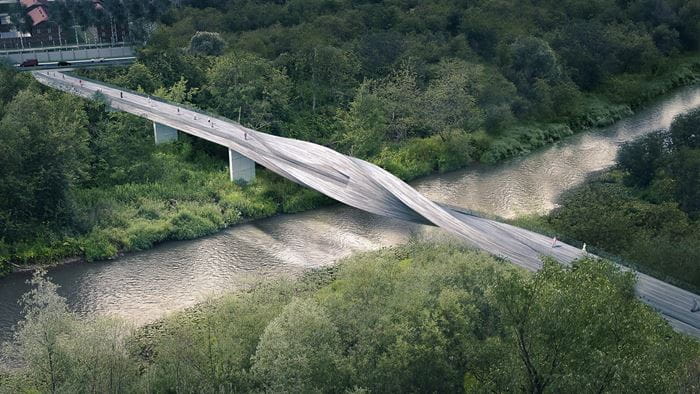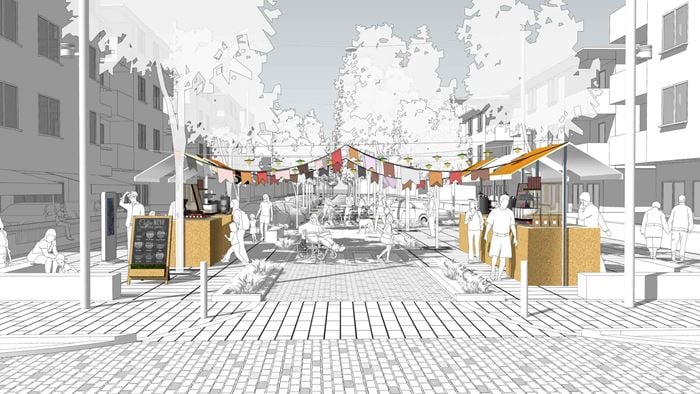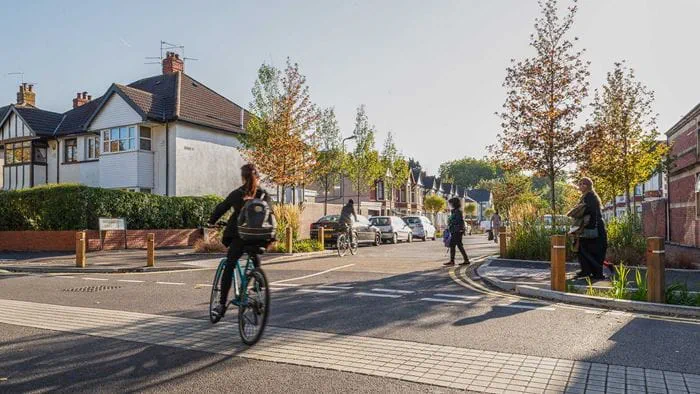It’s widely acknowledged that to meet active travel targets in the UK, more focus is needed on increasing levels of walking and wheeling, on the basis that more people are likely to walk and wheel than cycle as part of their everyday journeys. However, much less is known about how to create an environment that encourages and enables walking and wheeling than cycling, which has received the lion’s share of attention within the active travel paradigm until recently. So how do we create a world for walking and wheeling?
Here in the UK, many of our town and city streets are currently unattractive for walking and wheeling. Poor design and maintenance of the street environment and deference to the needs of motor vehicles have created street environments that are unsafe and unattractive for active travel, particularly for more vulnerable road users. Active Travel England has sent a strong message that planners and politicians need to focus on walking, wheeling and cycling, in that order of priority. There has never been a stronger mandate to bring walking and wheeling to the fore and create genuinely walkable and accessible streets to support healthier and thriving neighbourhoods.
A more equitable balance for street users
People are increasingly using large and inefficient private vehicles for short trips, many of which take place in densely populated urban areas, leading to related anti-social driving behaviours (excessive speeds, parking on footways and engine idling). Not only does this bring its own individual problems – such as air pollution, noise and road danger – but collectively it produces an environment that is hostile for walking and wheeling.
As anyone who has walked their children to nursery or school will understand, the dominance of motor vehicles can make the mere act of holding hands with your child and/or pushing a pram while trying to get them there on time a dangerous pursuit. Excessive traffic volumes, speeds and pollution are a daily occurrence for many on the school run or taking other everyday trips. Meanwhile, narrow footways, poor footway surfaces, cars parked across footways, people parking on zig zag lines blocking sight lines to cross the street are just among a few of the problems faced... making walking and wheeling unsafe and unpleasant. Issues such as these force many people to drive, further exacerbating the problem.
Lessons from behavioural science tell us that the design of the physical environment shapes behaviour, in terms of what it prioritised, encouraged or permitted. If we want to encourage walking and wheeling, we need to redesign our streets to rebalance the priority given to different modes of transport and make the desired behaviour (in this case walking and wheeling) the obvious, most attractive choice, while making undesirable behaviours (short car trips and anti-social driving) less appealing or more difficult. We still need the road network, but we need to find a more equitable balance between all users, one that balances a wider and more socially viable set of priorities, from health to air quality to safety to inclusivity and climate goals.
Measures to improve streets for cycling are already well-understood and have tended to command the attention of planners and decision-makers over the last decade. But there is less understanding about what needs to be done for walking and wheeling. Through our active travel work, we have come to understand that there are a number of key design interventions that are important to consider:
-
Increasing footway widths – inadequate widths can make walking and wheeling uncomfortable or even impossible. Wheelie bins, advertising boards and footway parking can each exacerbate this problem.
-
Improving footway surfacing and maintenance – poor surfacing is frequently described as a key barrier to walking by members of the public.
-
Prohibiting pavement parking – a pervasive issue on many streets, with vehicles often blocking the way for people walking and wheeling, especially for those using wheelchairs or pushing prams. A footway parking ban is currently being considered by the UK Government for these reasons.
-
Redesigning the corner radius at side junctions – narrowing the angle for vehicles turning into side roads not only slows them down but also reduces the crossing distance for people walking and wheeling.
-
Introducing continuous footways – continuous footways (also known as “Copenhagen crossings”) across side road junctions provide priority for people walking and wheeling, effectively reinforcing the changes made in the updated Highway Code that gives pedestrians priority in these locations, and reduces level differences that make it more difficult for people with mobility issues to move around
-
Increasing and improving crossings – too often crossing opportunities are not frequent enough, away from desire lines or inconvenient (staggered and/or long wait times) because general traffic has been prioritised.
-
Removing access barriers – many footpaths have seen barriers introduced to deter motorcycle access and/or to slow down people cycling. These are often too narrow to allow wheelchairs, pushchairs and different types of cycle (including adapted cycles for disability use)access and should be removed or replaced with versions that have accessible designs.
-
Develop an attractive walking environment – walking and wheeling trips are more likely to take place if there are things to see and do on the journey, and if the environment is safe and pleasant. Key considerations include planning for active frontages, providing connections to local shops and services, lighting and green infrastructure (such as trees and rain gardens).
Wider guidance on designing streets for walking and wheeling is available in Walking for Everyone, which was produced in collaboration between Arup, Sustrans and Living Streets.
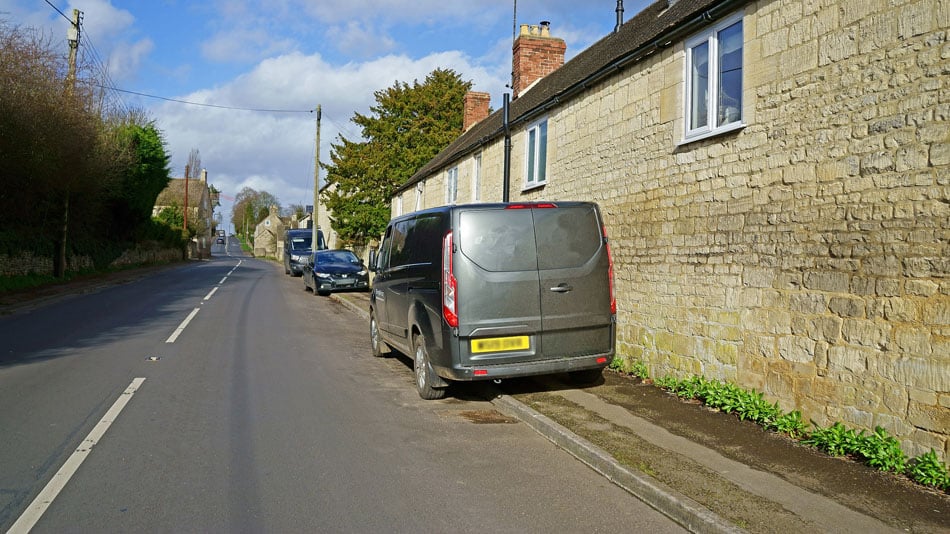
Designing for area-wide improvements
Designing for walking and wheeling requires a change in approach. These trips tend to be short in length and cover the first and last mile of journeys (if not the entire journey), which means that corridor and route-based initiatives will have limited impact. Funding for active travel has historically been directed towards these types of schemes and primarily focused on cycling. Meanwhile, neighbourhood schemes such as Low Traffic Neighbourhoods and Mini-Hollands have seen mixed-success due to the focus on restricting traffic using modal filters, which has proven highly controversial and has limited the ability for schemes to be delivered and delivered to their full potential.
To this end, it appears that making area-wide improvements is often the most suitable approach for walking and wheeling, with schemes that improve both the first and last mile of everyday journeys (the neighbourhood and the destination) and deliverable at scale. To enable this to happen, more funding needs to be directed toward area-based schemes and we need to learn to better understand the types of interventions that will truly make walking and wheeling easier and more attractive than jumping in the car for short journeys.
Here at Arup, we have developed uMove – a data-driven toolkit that can help project planners to understand and predict pedestrian flows, route quality and demand across towns, cities and neighbourhoods. This can be used to determine where to focus interventions and prioritise spending to increase walking by identifying the streets with the highest walking potential, which can be assessed against different policy objectives and assessing existing walkability. The design features set out in this article should then be considered to create places that are attractive, welcoming and inclusive for walking and wheeling. In Manchester, uMove enabled us to analyse hundreds of kilometres of streets in just a few short days to determine where to prioritise interventions to create a more walkable city centre

Prioritising walking and wheeling
When we talk about active travel today, the terminology is beginning to reflect a wider and more inclusive definition of who is active and how they want to travel. A distinct shift is underway to make walking and wheeling the top priority. The interventions and approaches set out above will help designers and planners address the key barriers to walking and wheeling and encourage these modes to become the natural choice for shorter journeys, or as part of longer journeys. We also recommend practitioners take a look at our Cities Alive: Towards a Walking World publication and Living Streets’ Walking A to Z which provides a list of small-scale improvements that can be made to create a walking world for everyone (written by Susan Claris ex-Transport Planner at Arup and Vice President of Living Streets). As we embrace the need to create a walking world, it is crucial that we learn from and listen to each other and ensure that all voices within our communities are heard.
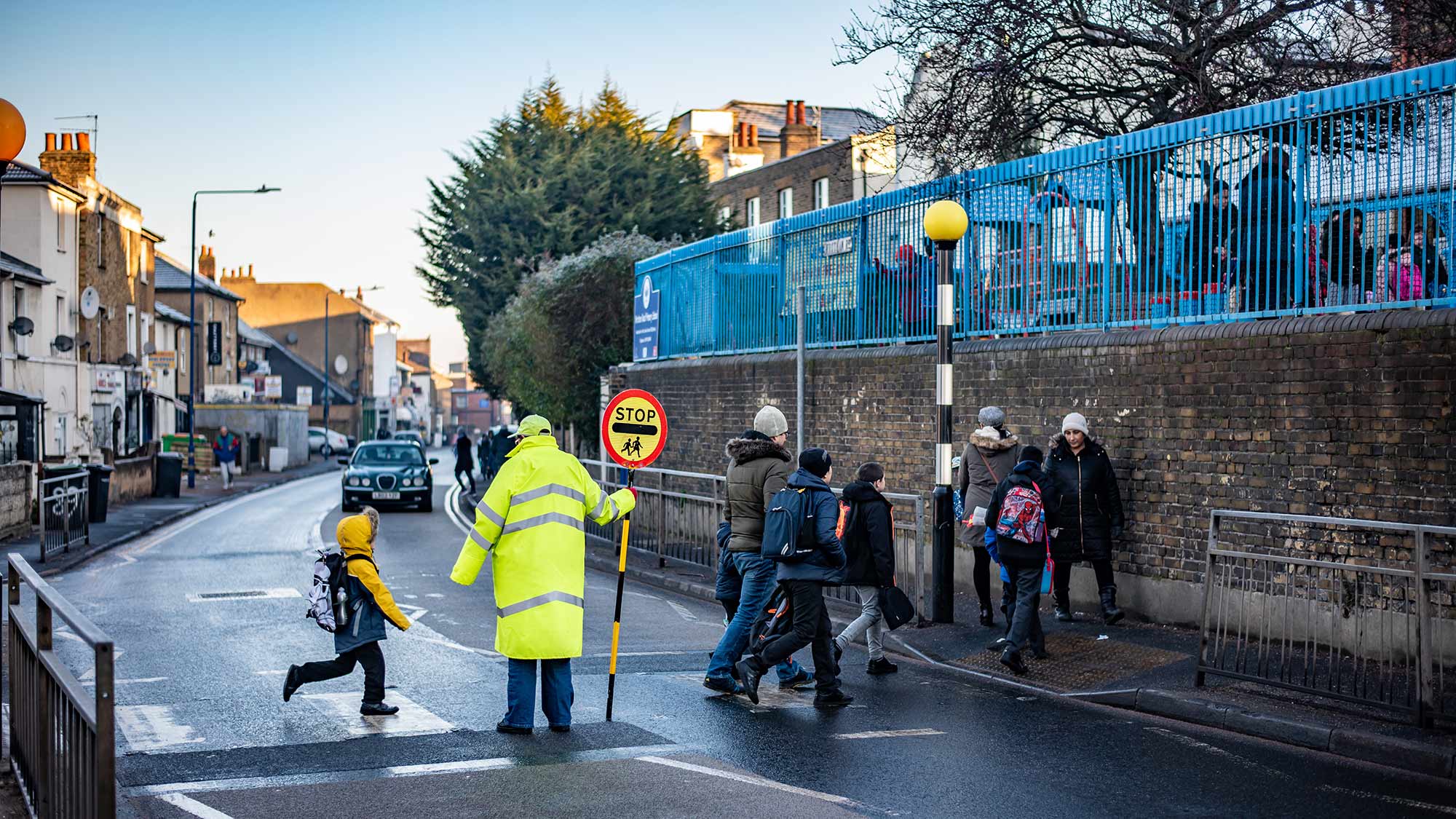 ;
;

